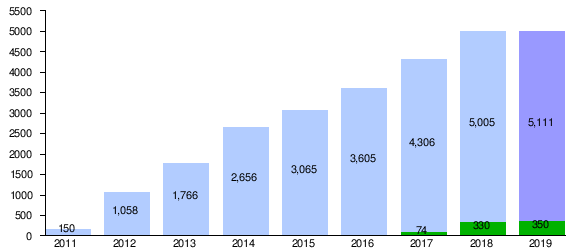Twin Accidents
- On October 29, 2018, Lion Air Flight 610, a 737 MAX 8 registration PK-LQP, crashed into the Java Sea 13 minutes after takeoff, killing all 189 passengers and crew.
- On March 10, 2019, Ethiopian Airlines Flight 302, a 737 MAX 8 registration ET-AVJ, crashed approximately 6 minutes after takeoff, killing all 149 passengers and 8 crew members on board.
Countries Ordered Grounding
- On March 11, 2019, China was the first country to order all 96 of its 737 MAX aircraft grounded
- On March 12, 2019, Europe and India join wave of countries grounding the 737 Max
- On March 13, 2019, U.S. regulators joined the global chorus by grounding the plane

Undelivered Orders
Boeing produces 52 aircraft per month and its newest version, the MAX, represents the lion’s share of production, although Boeing declined to break out exact numbers. [oann.com]
As of January 2019, Boeing had 5,011 firm orders from 78 identified customers for the 737 MAX. The top three identified airline customers for the 737 MAX are Southwest Airlines with 280 orders, Flydubai with 251 orders, and Lion Air with 201 orders. [Wikipedia]

The order book for its 737 Max is worth more than $600 billion according to Bloomberg.
Boeing’s stock closed at $422.54 per share before the accident and closed at $377.14 per share on March 11. ( -10.74%, after 3 days and all major markets grounded the plane)
With its 564.99M shares outstanding, the market value decreased by ~$25.8 billion. It seems that investors are more optimistic than I thought. With immediate delivery delayed/cancelled, the order value should shrink by a lot (50% discount * 10% profit * $600 billion = $30 billion; 2018 total net income ~$10 billion), plus the future loss of revenue on maintenance, loss of orders/bargain power due to the trust/brand damage.
Airlines may just switch to Boeing’s other aircrafts tho.









